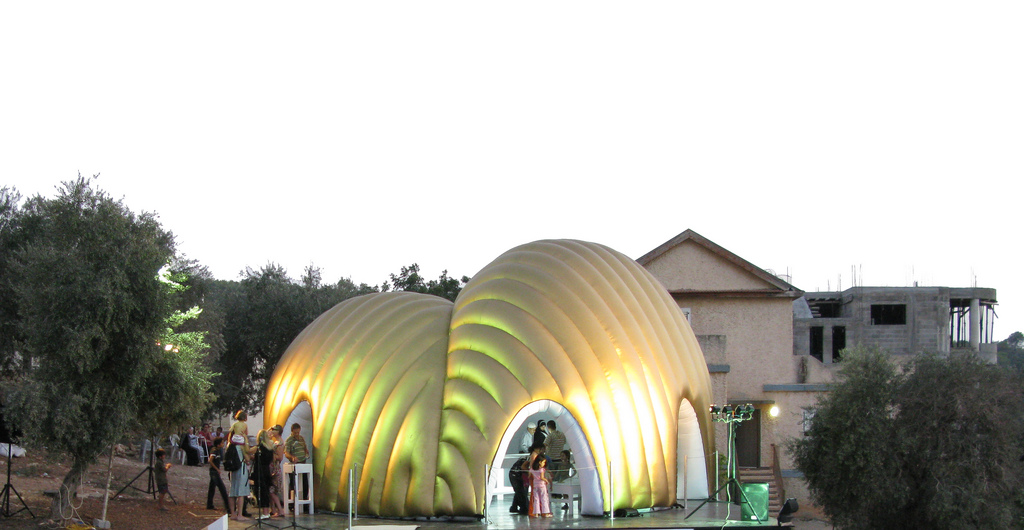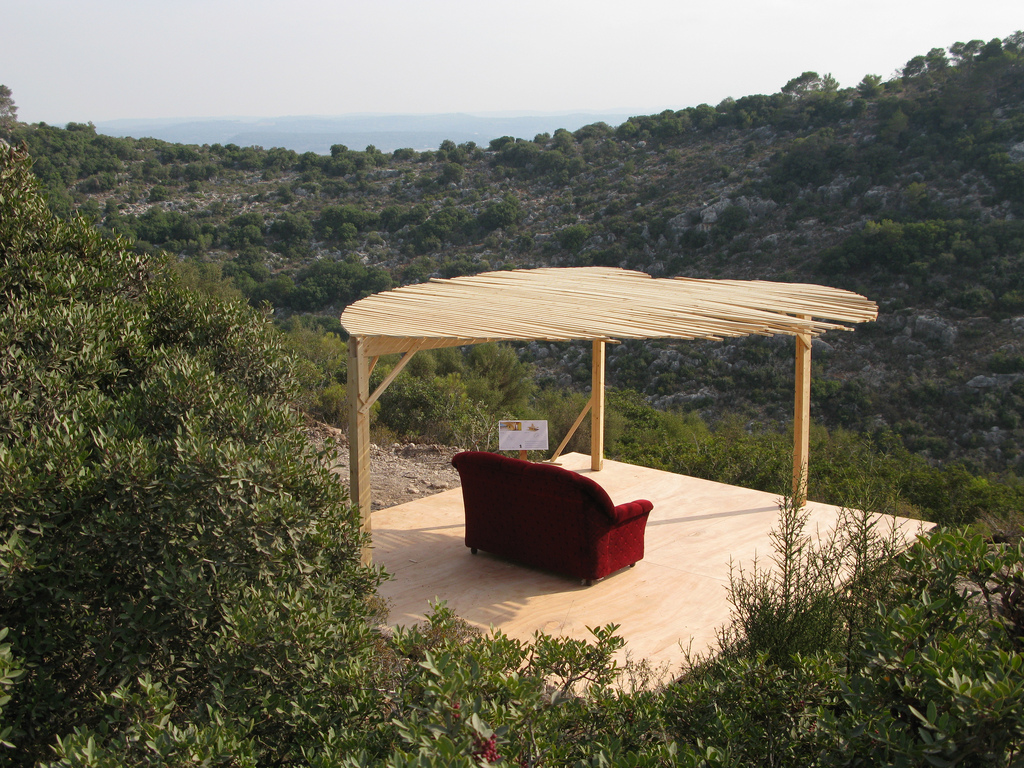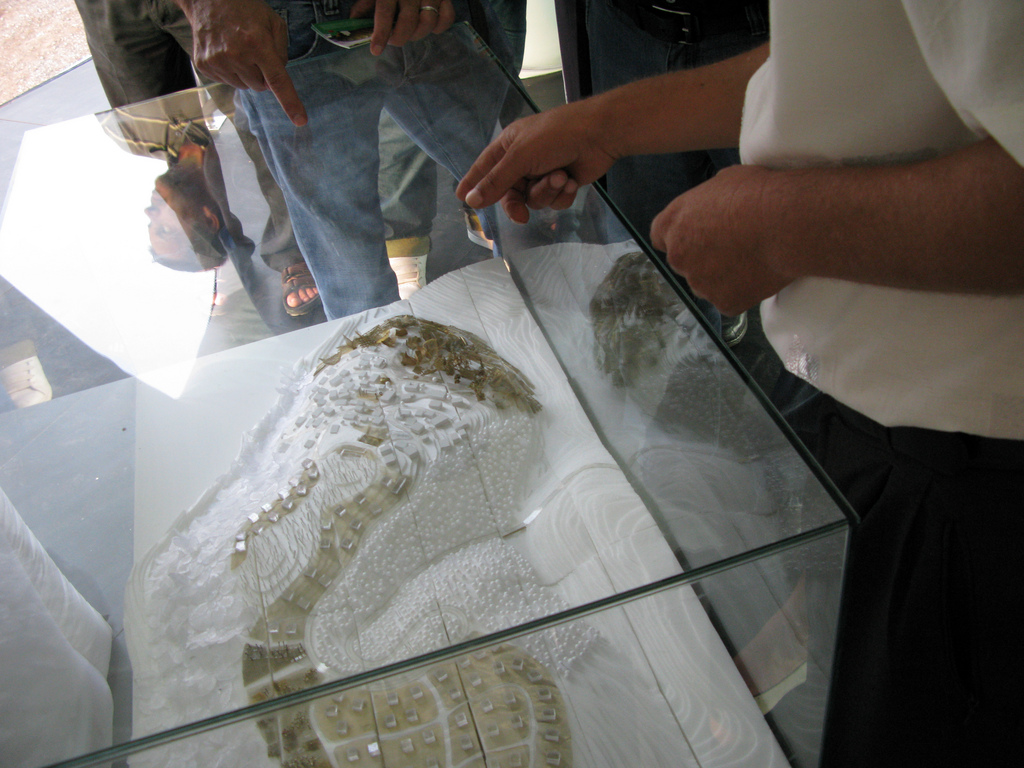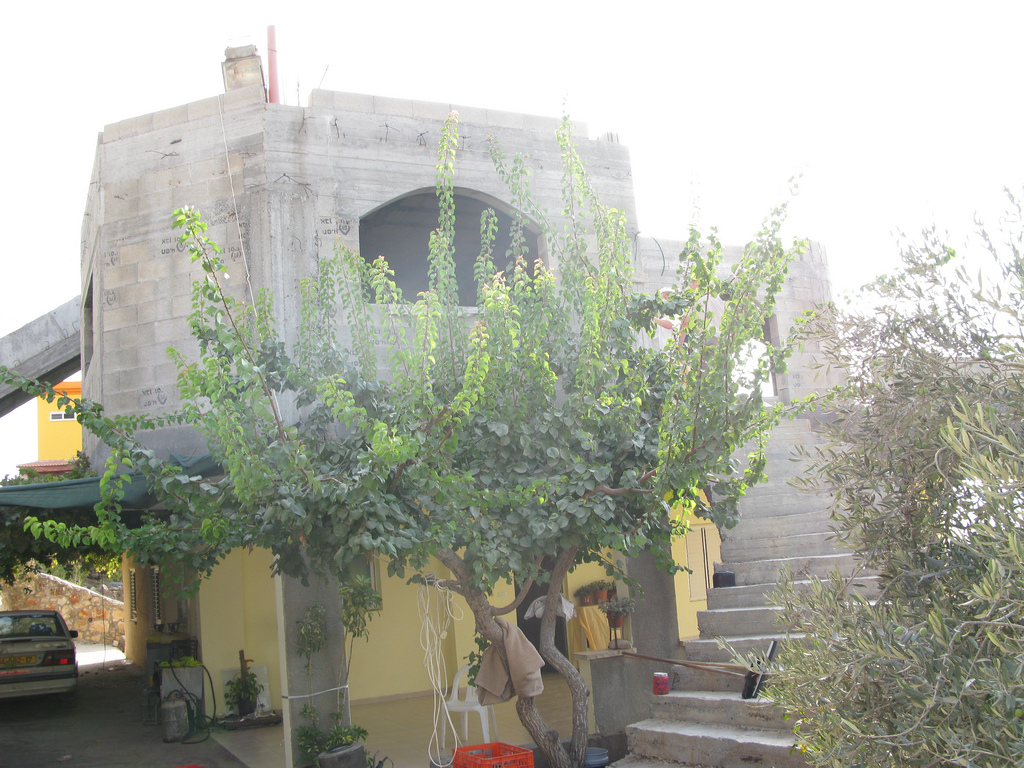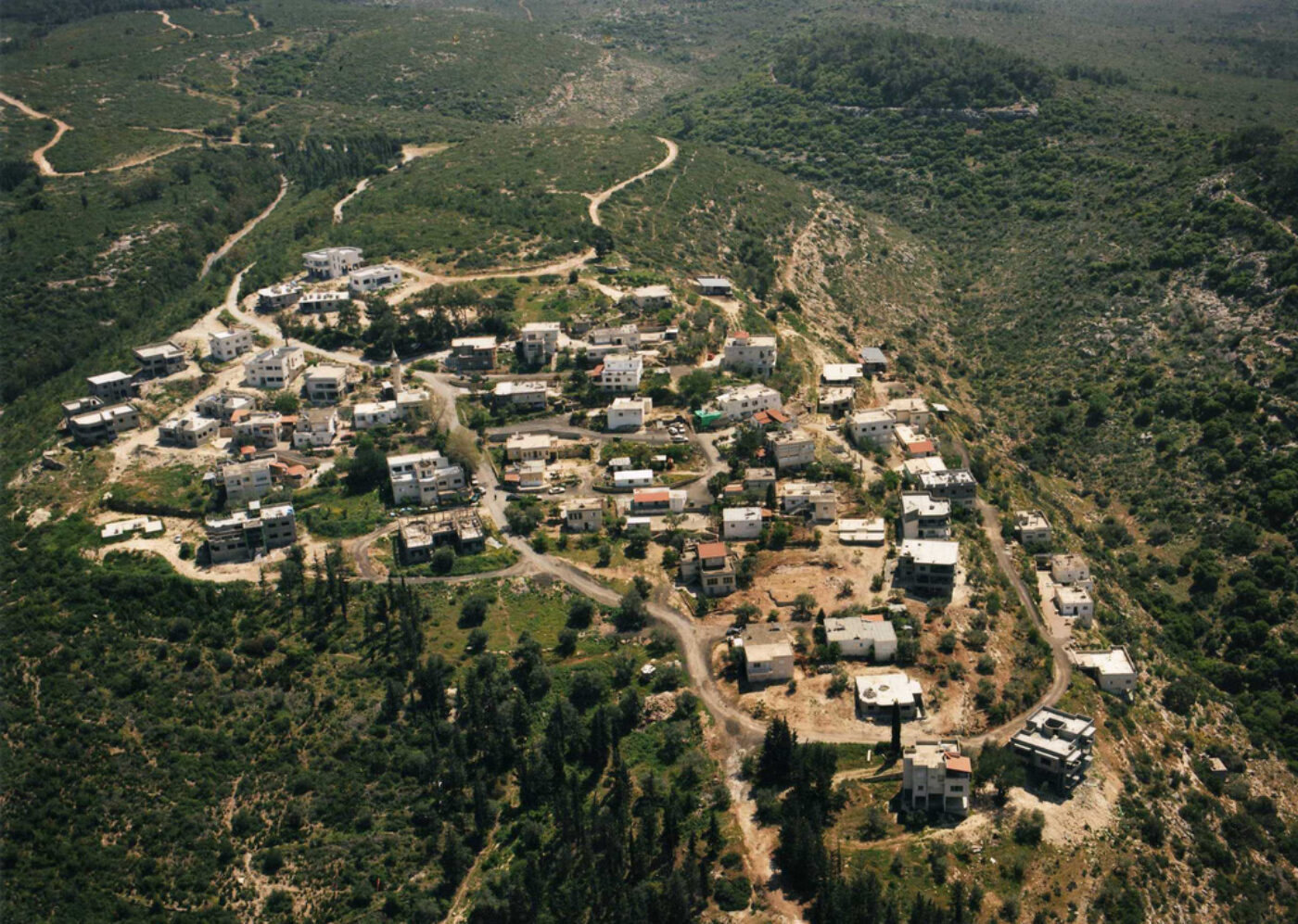
Ein Hawd was an old Palestinian village on Mount Carmel. During the War of Independence in 1948, the Israeli army occupied the village, and the 900 villagers became refugees overnight. One group fled to nearby family land on the mountain and began building a new village, called Ein Hud after the old one. In the early 1950s, the picturesque old village became inhabited by Jewish artists who called it Ein Hod. It became a flourishing tourist destination whilst the Palestinian Ein Hud stayed unrecognized and illegal without proper infrastructure. In 2004 it was finally recognized but with a master plan that restricted the area and the Palestinian identity.
With the international competition FAST wanted to present a new master plan with possibilities for sustainable economic and social growth of the village and use that for the appeal against the proposed master plan in the Israelian supreme court of justice. Part of the brief for the competition was to design a community center for the villagers. The result was a mobile floating pavilion that can be recognized as heart shaped by the Israelian helicopters used to trace illegal building in the area.
Architect: Malkit Shoshan (founder and director of FAST) with on-the-ground contributions by Ali Kazma, Berend Strik, Camila Pinzón Cortes, Dalia Nachman- Farchi, Dan Graham, Debra Solomon, Gianluigi Ricuperati, Gillian Schrofer,
Map Office, Matthijs Bouw, Maurizio Bortolotti, Muhammad Abu Al Hayja, Nisreen Abu Al Hayja, Noga Inbar, Ola Jabali, Petra Blaisse, Rebecca Gomperts, Salman Natour, Sharif Waked, Multiplicity, Tomas Saraceno, Willem Velthoven, Yona Friedman
Affiliated organization: Foundation for Achieving Seamless Territory (FAST)
Time frame: First official Ein Hawd master plan drafted in 2004;
first pavilion built in 2008
Read More: One Land Two Systems Magazine by FAST
